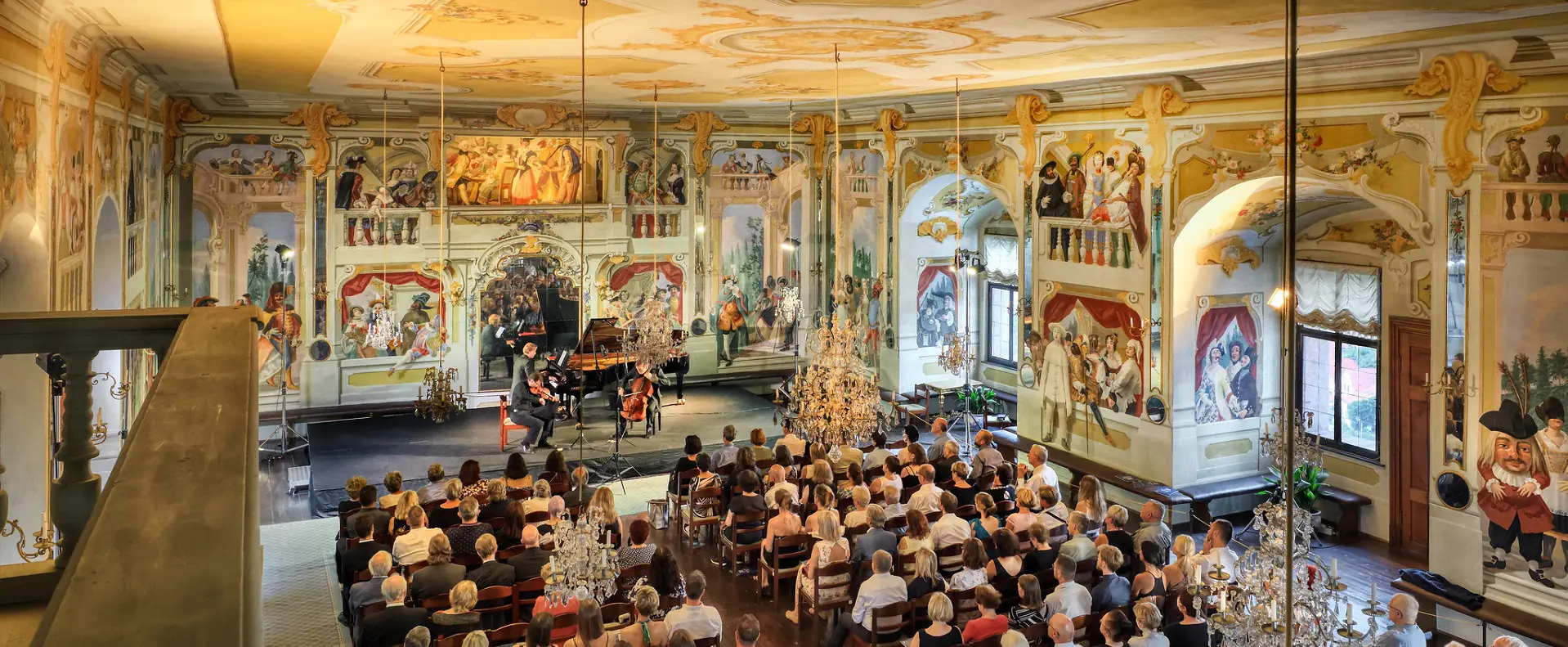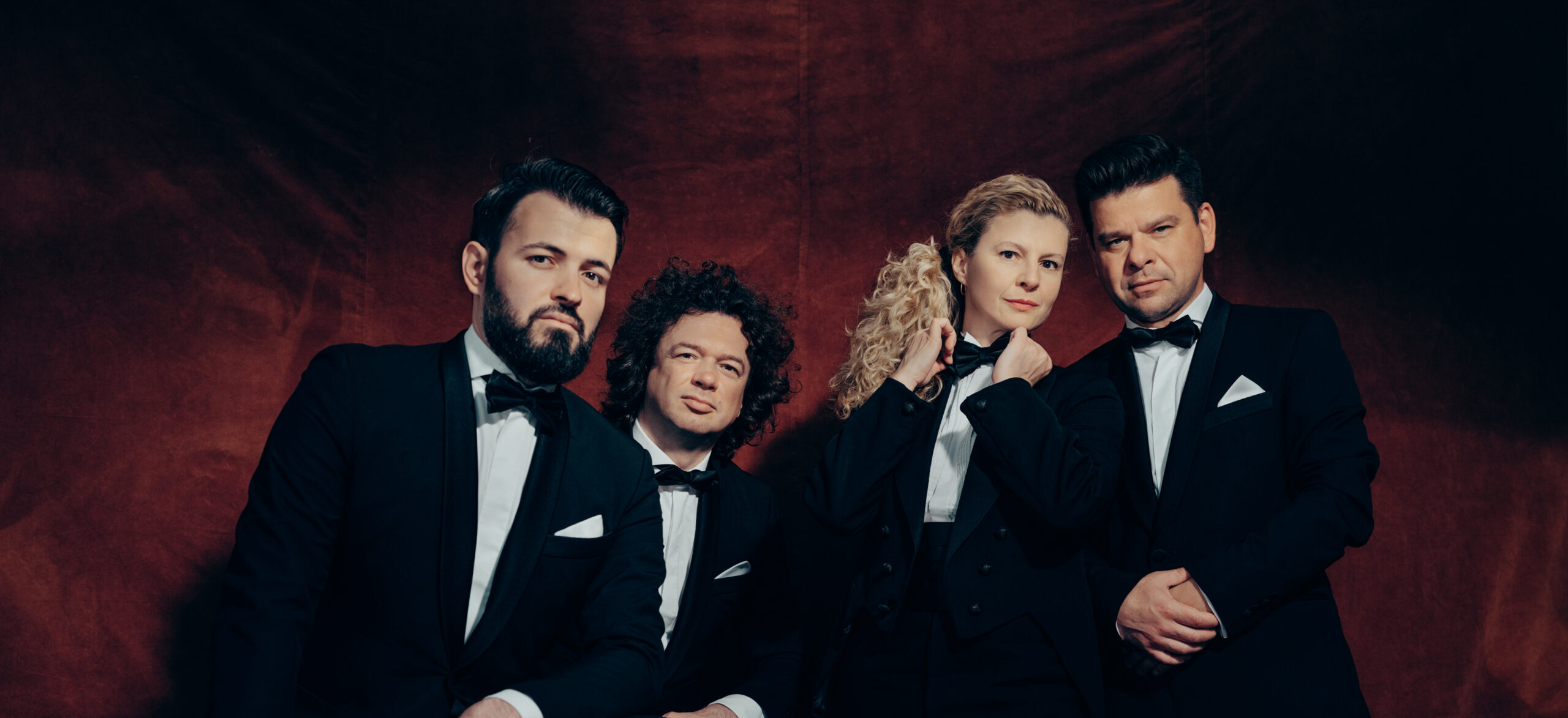Event date
22 / 07 / 2026 - Wednesday 19:30
Event venue
Event type
Pavel Haas Quartet
A dialogue between tradition and modernity in Czech quartet music. Dvořák's classical form and Haas's expressive avant-garde performed by the highly acclaimed Pavel Haas Quartet. The quartet, renowned for the color of its sound, will play in the intimate atmosphere of the Masquerade Hall.
This concert is part of the Festival Wednesdays, which includes following concerts:
-
-
-
- Pavel Haas Quartet, 22.7. 19:30, Masquerade Hall Český Krumlov
- Paganini project: Vodička / Steidl, 29.7. 20:00, Červený dvůr Psychiatric Hospital
-
Artists
Pavel Haas Quartet
Veronika Jarůšková - violin
Marek Zwiebel - violin
Šimon Truszka - viola
Peter Jarůšek - cello
-
-
Program
Antonín Dvořák: String Quartet in C major, op. 61
----pauza----
Pavel Haas: String Quartet No. 2 „Z Opičích hor“ ("From the Monkey Mountains")
Pavel Hass Quartet
The Pavel Haas Quartet is one of today’s most important string quartets, acclaimed for its expressive intensity, colorful sound, and extraordinary ensemble playing. It has won five Gramophone Awards, including Recording of the Year 2011. The ensemble regularly performs in the world’s leading concert halls, including Wigmore Hall, Musikverein, Concertgebouw, Philharmonie de Paris, Elbphilharmonie, and Carnegie Hall. In the 2025/2026 season, it will return to Musikverein, Philharmonie de Paris (Pierre Boulez Saal), and Wigmore Hall and will tour Asia and North America. The quartet is an ambassador for the Year of Czech Music 2024 and will be in residence at the Smetana’s Litomyšl Festival from 2025 to 2027. It records exclusively for Supraphon; in September 2025, it released an album of Bohuslav Martinů’s string quartets. The ensemble was founded in 2002 under the leadership of Milan Škampa and bears the name of composer Pavel Haas. Its members are Veronika Jarůšková, Marek Zwiebel, Šimon Truszka, and Peter Jarůšek.


Masquerade Hall, Castle
When you enter the Masquerade Hall of the Český Krumlov Castle you will feel like in the 18th century, when it was decorated by Josef Lederer.


